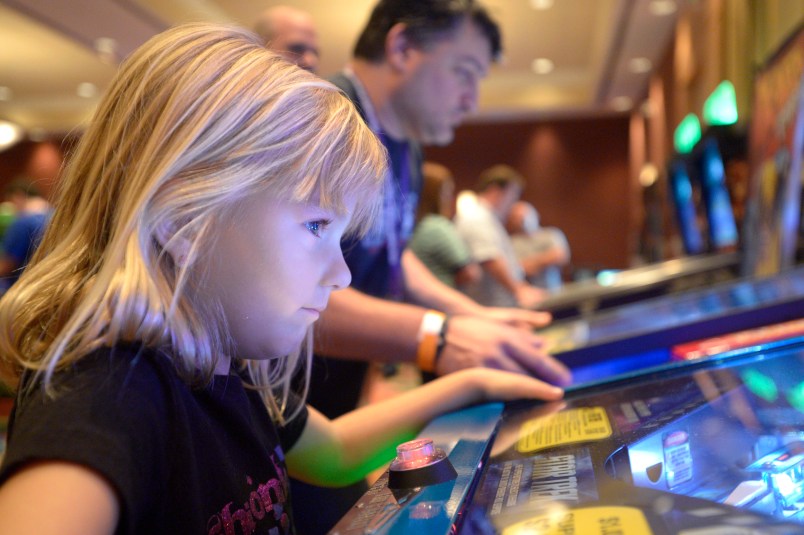To help publicize The Second Machine Age we went on a two-week book tour, visiting Berkeley, San Francisco and Seattle on the West Coast and Boston, Washington and New York on the East. The days were exhausting but hugely informative because they gave us the chance to hear what’s on people’s minds; we averaged about two talks each day, each of which included time for questions from the audience.
This was our favorite part: we got to the point where we knew just about exactly what each other was going to say at any point in our prepared remarks or discussion with a moderator, so we looked forward to mixing things up with questions from those who cared enough about the topic to come out and listen to us.
 We heard lots of variations on a few big themes. Audience members were deeply interested in education, and in both immediate interventions and the distant future. Here’s an overview of what we were asked and what we answered.
We heard lots of variations on a few big themes. Audience members were deeply interested in education, and in both immediate interventions and the distant future. Here’s an overview of what we were asked and what we answered.
How can I prepare my child for the changing economy? We heard this from parents of both young kids and college-age ones. Our answer typically had three parts.
First, make sure they’re good at things that computers and robots are still lousy at. These things include cognitive skills of ideation, creativity, and innovation and interpersonal ones like persuasion, motivation and empathy. These are very different than the stereotypical 20th century classroom of students sitting quietly in rows, learning to carefully follow instructions. Computers are already good following rote instructions and getting better all the time.
Second, we also stressed that people still have a huge advantage over machines now and for some time to come in physical tasks involving locomotion, sensing and dexterity and fine motor skills. So nurses, repairmen and cooks are not about to be replaced by robots. These are not the highest-paid or most prestigious jobs in our economy, but they’re likely to be durable ones. Chapter 12 of our book is devoted to recommendations for individuals.
Third, parents and children need to recognize that in the 21st century no one set of skills will be sufficient to last a lifetime. Instead, the second machine age is a time of constant change, requiring lifelong learning and constant adaptation and flexibility.
What are the right policies to restore job and wage growth? This is a key question. When answering it, we pointed out that even though technological progress is amazing and accelerating these days, AI and robots are not yet on the brink of taking all of our jobs.
The U.S. economy, in fact, is still adding jobs every month (just not enough to do more than keep pace with population growth). So in the short term the smart policies are those that will stimulate general economic growth, which will bring faster wage and job growth along with it. And as we point out in Chapter 13, there’s surprisingly broad agreement among economists on what those policies are: they include infrastructure improvement, immigration liberalization, education reform, the facilitation of entrepreneurship and investment in basic research.
We refer to this as the “Econ 101 playbook” exactly because it’s so uncontroversial within the profession. Unfortunately we’re not following this playbook very well at present in America; if we did, things would be a lot better for workers. For instance, by reinventing education to focus more on creativity and interpersonal skills, we can simultaneously boost growth and improve the prospects of people whose old jobs, often involving more routine information processing, have been automated.
Isn’t work eventually going to become scarce or even obsolete as technology continues to race ahead? We started referring to this as the ‘sci-fi future’ question. People asked us over and over if we foresaw a totally digitized and automated economy, or at least one where the machines were doing so much of the work that human labor was largely obsolete as a concept.
Our first response was that we don’t see this coming in the next decade or so, so it’s too early to start preparing for it. But when take the kinds of progress that we’re seeing today and project them forward for forty or fifty years, we see a science fiction, low-labor economy.
We can’t foresee if it’s going to be more like Star Trek, where no one worries about a paycheck and people are freed up to explore new worlds, or more like Elysium, where a small elite works hard to separate itself from the miserable masses.
The point we stress in the conclusion to The Second Machine Age is that neither of these futures is pre-determined. The society we create for ourselves is determined by our choices, not our tools. In fact, going forward, we will have more freedom and flexibility than ever to shape our own future and our society more broadly. The last sentence of our book is “Technology is not destiny; we shape our destiny.”
This op-ed is part of TPM’s Book Club for The Second Machine Age: Work, Progress, and Prosperity in a Time of Brilliant Technologies by Erik Brynjolfsson and Andrew McAfee.
Andrew McAfee is a principal research scientist at the MIT Center for Digital Business and the author of Enterprise 2.0. Erik Brynjolfsson is the director of the MIT Center for Digital Business and one of the most cited scholars in information systems and economics. 






